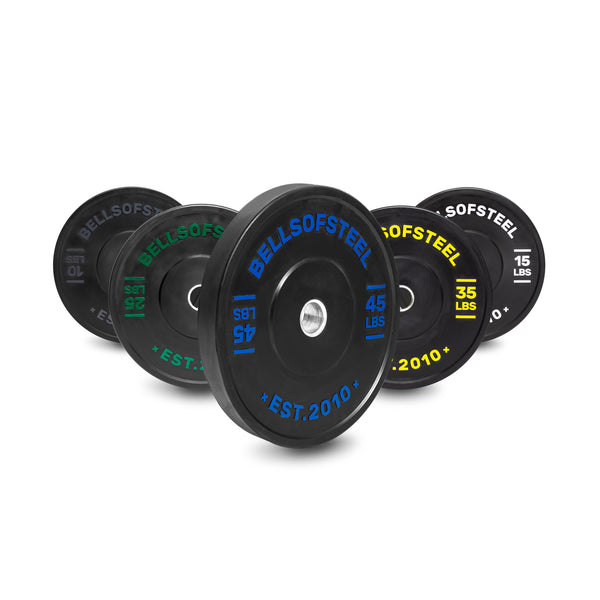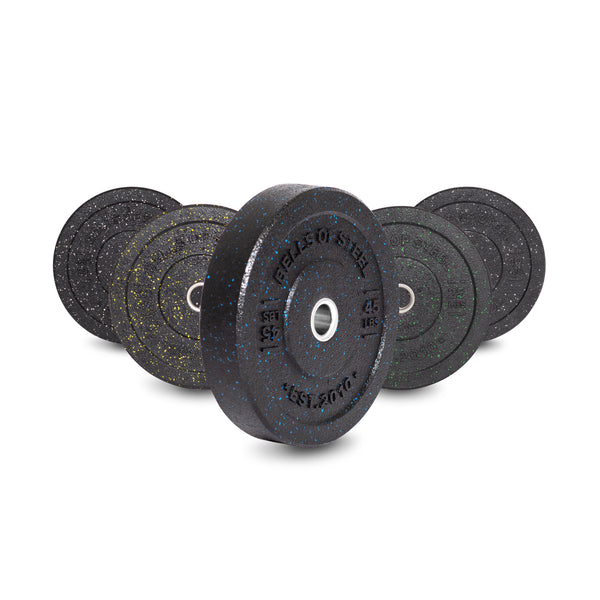This is part 1 of 4 in our How to Get into Strongman series. We’re going to highlight our Bells of Steel Yoke and some of the movements you can do with it — besides the standard yoke walk — as well as some tips and tricks for the other movements that we talk about. Let’s kick it off with the yoke walk.
If you’ve never seen a yoke before, here’s our Bells of Steel Yoke as an example. The primary use of this equipment piece is the “yoke walk” or “yoke carry”, where you position the crossbeam on your back to pick up and carry the entire unit. It’s one of the exercises that is most often associated with strongman, despite most people not having performed the exercise before.
As an alternative to the yoke walk, you might also see athletes pick up a car on each side of them and walk down the street with it — this takes commuting to a whole new level. For your first set of yoke walks, here are the basics that you’ll want to think about:
- Set your stance
- Position the crossbeam on your back
- Prepare to lift
- Brace your core
- Pick up the yoke
- Walk forward
To expand a bit on the steps above, here are some finer points you can consider to optimize your yoke walks. For most people, your squat stance width and foot placement will probably feel best.
If you tend to squat with a wide stance, bringing your feet in slightly will feel more natural and will set you up better for having to walk forward. Like in a squat, everything between your shoulders and the ground should be braced and tight.
If you find yourself overthinking about where the pressure in your feet should be, simply curl your toes upwards and then lightly place them back down towards the floor.
Let’s start with the #1 misconception about the yoke carry. People typically want to pick the weight up and take huge strides with it to cover as much ground as possible. They see these big strong dudes that are doing yoke walks regularly and are taking giant steps, and think they should do the same. This is wrong, because they often forget that those athletes are usually 6’5” or taller. Of course they’re taking huge strides — they’re HUGE people!
In reality, short steps are the way to go when doing a yoke walk, and a great saying to remember when learning the yoke walk is “toes to heels This means that the heel of your forward-moving foot will not pass the toes of your planted foot.
By far the most important cue in the yoke walk is to brace your core. You want to brace your abs in a 360 degree style at the beginning and maintain that brace the entire time as you walk with the yoke. While you’re bracing, remember to also control your breathing. It’s important to breathe into your belly while trying to “break apart your belt” as you’re taking your breaths.
Let’s talk about some other movements that a yoke can be used for. Keep in mind that we’re talking about our Bells of Steel Yoke here. Other models of yokes will differ slightly, so you might have to adapt certain aspects of these exercises to make them work. A key part of strongman is about being creative in your implements (what you use) and in your setup (how you use them For example, many Icelandic strongmen get started by literally going out into the countryside and picking up the biggest rocks that they can find.
So, here we try to utilize the yoke in more ways than one. Some strong lifters can overhead press the yoke to simulate a safe press, like what you’d see in the World’s Strongest Man. You can also use it to simulate a prowler-like sled push Those who have larger frames will find this nice since it’s generally harder than a typical prowler push due to its weight and friction against the floor.
However, it also tends to place the user in a more favorable upright position while pushing. Apart from that, you can also bump the crossbeam down on the yoke and then attach a carabiner and rope to it This will allow you to mimic a truck pull or an arm-over-arm pull to practice another popular strongman event.
The yoke is not only great for training the yoke walk itself but you can utilize the yoke in many other ways to facilitate your strongman training at home. Attach your powerlifting belt to the center section of the yoke for a form of backwards carry or pull.
This exercise lends itself to the creativity that often happens in strongman where you have to find ways to get creative in how to use your implements. Remember, the yoke is not just for yoke carries!
By incorporating the exercises we mentioned into your training like presses, pushes and pulls, it’ll get you strong everywhere. If you’re looking to get into strongman and you’re also looking for versatile (and affordable) equipment, check out our Strongman Yoke to get your strongman journey started today!




